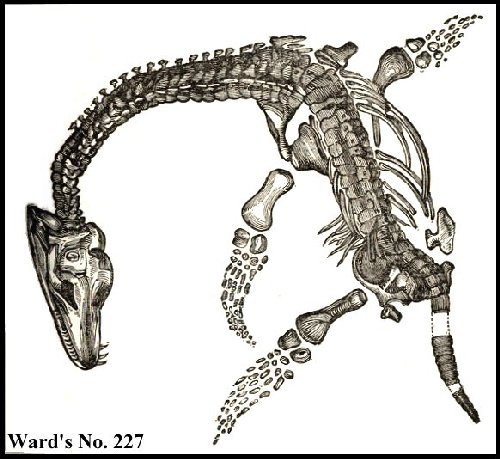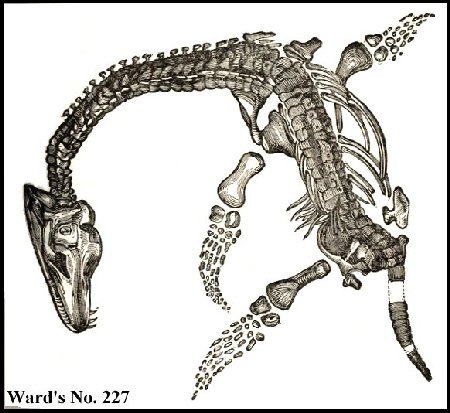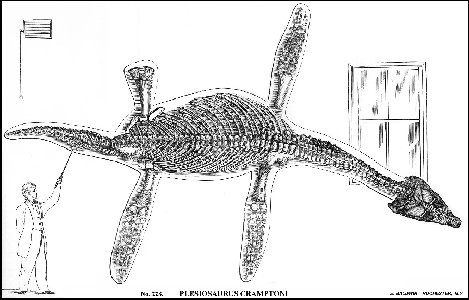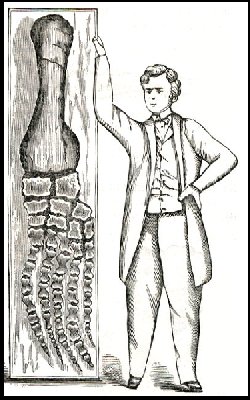SKELETON, on slab. This splendid Plesiosaurus
— the largest ever discovered was
found in 1848 in the Lias, near Whitby, England, and adorns the
Natural History Museum of the Royal Dublin Society. It lies in a prone position, resting upon the ventral surface with the head and neck slightly inclined to the right The skull is almost entirely free from the matrix, and is very perfect, excepting the zygomas.
In contour it is crocodilo-lacertian; it is
somewhat flattened in proportion to its length and width, tapering from the parietal crest to the snout. The orbits are obliquely placed and sub-triangular
in shape the greatest diameter is five and a half inches. The nasal apertures are ovoid, and are situated well in front of the orbits. The anterior portion of the
cranium is elongated and rounded at the
muzzle. The lower jaw is extremely massive, its greatest length being
three feet six inches, and its greatest
depth six inches. The teeth number over a
hundred. They resemble those of the Crocodile in their irregular arrangement, and in
being implanted in distinct cavities. The large teeth are situated in front. The length of the head is
to that of the neck as five to
eight, and to that of the whole skeleton as one to
six, The vertebral column throughout has
fallen over towards the right side, presenting a slightly irregular curve, thus exposing
in the cervical series a side of the centrums with their large neurapophyses. The cervical vertebrae
number twenty-seven. There are thirty dorsals,
having a united length of eight feet. The caudal
portion is somewhat dislocated: the centrums with their spines and processes are, however, well exhibited. The vertebrae of this region number thirty-four. The ribs are well shown, being
nearly in their original position, Excepting
the left hind-paddle which is imperfect, the
extremities are remarkably preserved. The carpal and tarsal bones are each
six in number; the metacarpals and
metatarsals, four. The humerus and femur are each
twenty inches long. This cast is in eight pieces.
Size. 22 ft. 8 in. x 12 ft 6 in. Price,
painted, $150
No. 229. Plesiosaurus Cramptoni,
Carte and Bailey,
Head of No, 228.
Size, 3 ft. 6 in. x 2 ft.
Price, $15
No. 230. Plesiosaurus Cramptoni, Carte and Baily.
Left Fore-Paddle of No.
228.
Size, 5 ft. 4 in. x 14 in. Price,
$10.00 |





